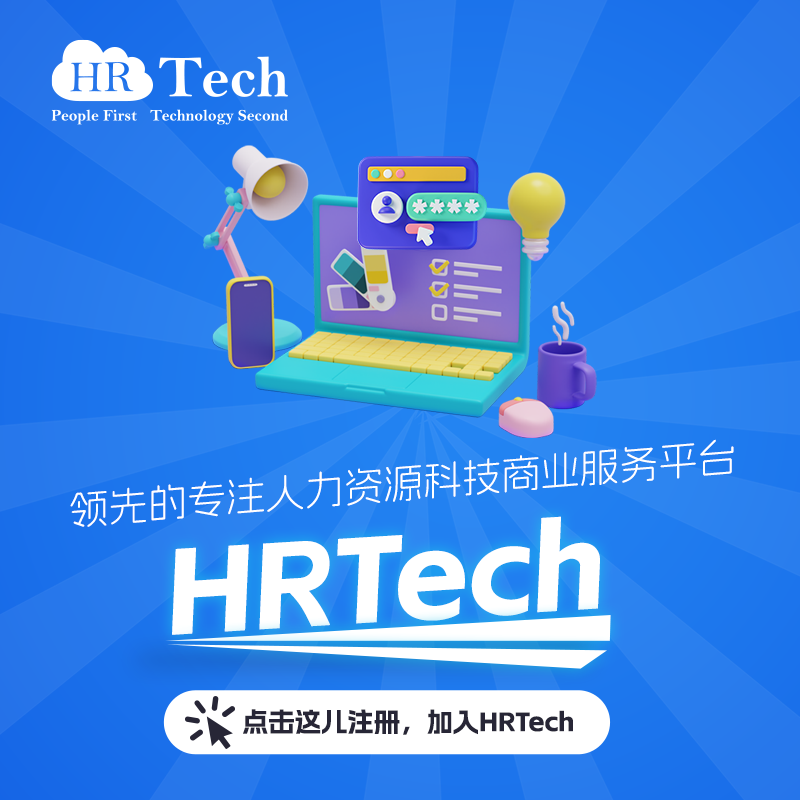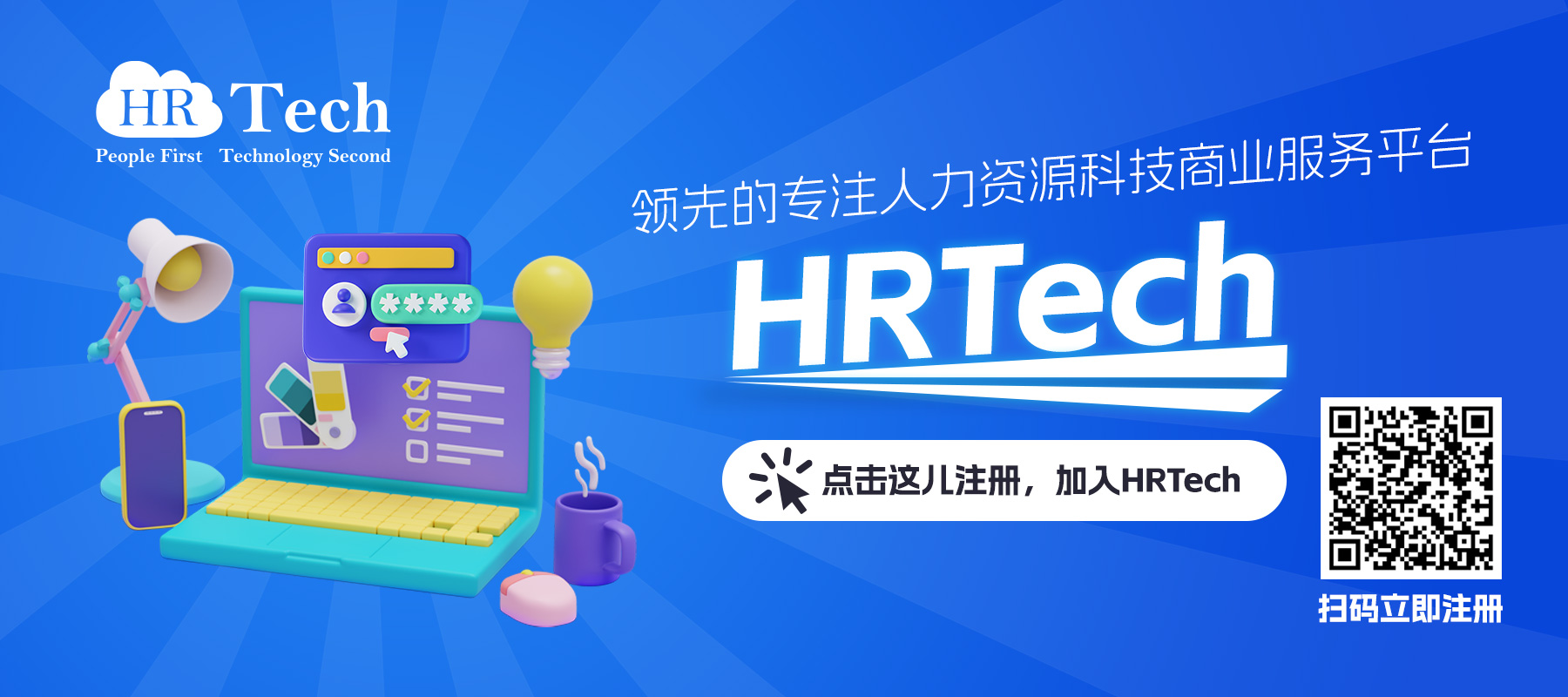-
 资讯
资讯
【美国】识别对工人和设施威胁的AI平台Urbint获得3500万美元融资,在飓风季节提高抗灾能力和安全性
Urbint 公司宣布获得由S2G Ventures(以下简称 “S2G”)领投的 3500 万美元战略投资,这将使 Urbint 进一步开发其针对公用事业的弹性和风暴响应解决方案,因为本已极具破坏性的飓风季节尚未结束。
“Urbint首席执行官科里-卡帕索(Corey Capasso)说:"飓风海伦(Helene)和米尔顿(Milton)严酷地提醒我们,气候变化和大风暴会对我们的电网造成影响。“S2G的这笔战略投资将使我们能够向公用事业公司提供更广泛的风暴响应解决方案,帮助他们更快地恢复供电,并在此过程中拯救生命。
Urbint for Storm Response是一个集中式平台,用于管理整个风暴和自然灾害响应流程--从处理物流、管理应急工作到实时分配资源。有了 Urbint,公用事业公司可以更快地找到承包商,更好地管理工作人员的食宿,更高效地使用救灾资金,并缩短恢复时间。
“正如我们近几个月所看到的,风暴频率和强度的提高对我们的能源基础设施构成了重大威胁。S2G 能源投资团队总经理 Bala Nagarajan 说:"我们认为,抵御极端天气事件对公用事业至关重要,投资于缓解和适应措施迫在眉睫。“Urbint的软件为电力公司提供了适应气候变化的能力,同时改善了电网正常运行时间和安全性。我们相信,Urbint 将在改变电力公司管理风险和应对气候变化的方式方面发挥关键作用。
Urbint 的人工智能驱动风险缓解解决方案使公用事业公司能够识别威胁,并有针对性地投入资源,以防止事故发生,提高安全性和可靠性。美国南方公司(Southern Company)、埃克塞隆公司(Exelon)和国家电网公司(National Grid)等许多美国最大的公用事业公司都信赖Urbint,Urbint帮助他们保护地下基础设施,防止严重伤亡事故,并在重大天气事件发生后更快地响应和恢复供电。
关于 Urbint
Urbint利用人工智能和最新的行业科学来识别对工人和基础设施的威胁,从而在安全事故发生之前将其制止。Urbint在工作现场就能发现风险,使能源和基础设施公司能够防止工人受伤和资产受损。北美许多最大的能源和基础设施公司都信赖 Urbint 来保护工人、资产、社区和环境。
关于 S2G 风险投资公司
S2G是一家多阶段投资公司,专注于食品和农业、海洋和能源领域的风险和成长期企业。该公司向企业家和领导团队提供资金和增值资源,帮助他们寻求 S2G 认为比传统替代方案更便宜、更快或更好的基于市场的创新解决方案。S2G 致力于创造长期、可衡量的成果,构建灵活的资本解决方案,从种子资金和风险资金到成长股本,再到债务和基础设施融资。
-
 资讯
资讯
【FESCO】北京外企再获两项数字大奖
在数字化浪潮席卷全球的当下,人力资源科技正成为推动行业发展的关键力量。10月25日,由HRTech主办的“2024人力资源科技年度论坛”在北京隆重举行,汇聚了国内外知名企业和行业专家,共同探讨人力资源科技的数字化探索和实践。作为中国人力资源服务行业的领军企业,北京外企人力资源服务有限公司(简称“北京外企”)在论坛上全面展示了其人力资源管理全流程产品与服务体系,并荣获“2024数字人力资源科技最佳机构奖”,其数字化灵活用工平台也荣获“2024数字人力资源科技最佳产品奖”。
在论坛上,北京外企市场营销顾问有限公司总经理周士程发表了题为“数字浪潮下的灵活用工:构建人力资源新解决方案”的演讲。他分享了北京外企如何面对超过2亿国内灵活用工群体的市场需求,通过打造系统与服务相结合的数字化灵活用工平台,助力客户在瞬息万变的市场环境中赢得先机。
周士程指出,随着数字化技术的不断进步,灵活用工已成为企业优化人力资源配置、提升运营效率的重要手段之一。北京外企数字化灵活用工平台集成了AI场景化、BI可视化、部署敏捷化、服务便捷化及业财一体化等系统能力。通过这一平台,结合20多年来在灵活用工领域的服务经验和遍布全国的服务网络,北京外企为客户提供从用工的招、培、用、结到业务的帮、管、服,覆盖线上和线下的全方位服务解决方案。
周士程还强调了平台在提升信息管控力、资源整合力以及降低运营成本和风险方面的能力,展示了北京外企如何通过科技赋能人力资源服务,推动行业的数字化转型。通过这一平台,北京外企不仅为客户提供了全方位的服务,也为灵活就业人员提供了更多的就业机会和职业发展路径,体现了国有企业在人力资源服务领域的责任和担当。
在颁奖典礼上,北京外企凭借其在人力资源科技领域的卓越表现,荣获“2024数字人力资源科技最佳机构奖”。同时,北京外企数字化灵活用工平台也因其创新性、实用性和高效性,被授予“2024数字人力资源科技最佳产品奖”。这些荣誉不仅是对北京外企在人力资源科技领域深耕细作的肯定,也是对其未来发展潜力的认可。
未来,北京外企将继续秉持创新精神,不断优化产品和服务,推动人力资源管理向着更加智能化、高效化的方向发展,助力更多企业在全球化竞争中取得成功。
-
 资讯
资讯
快讯:易路正式收购图谱一体化智能招聘系统业务
2024年10月28日,易路与图谱共同发表联合声明,宣布易路已经完成对图谱一体化智能招聘系统业务的正式收购。这一收购涉及相应的人员、资产、客户以及合同的全面转移。
声明内容显示,双方已于今日签署了具有法律约束力的收购协议,包括图谱在一体化智能招聘系统业务上的所有核心资产、相关技术团队及客户资源。此次业务整合和重组将极大增强易路在人才管理领域的竞争力,并进一步提升双方为企业提供的招聘和人力资源解决方案的服务质量。
图谱的智能招聘系统为市场提供了高度集成化的技术方案,多年来积累了数百家知名企业客户,并打造了一个具备创新能力的业务和技术团队。通过此次整合,图谱的核心资产和专业团队将为易路注入新动能,并帮助易路完善其现有的人才管理生态系统,扩展其薪酬管理之外的产品版图。
作为中国领先的本土SaaS技术公司,易路与图谱在过去十年内已共同服务了大量世界500强及中国500强企业。双方的产品模块高度互补,文化契合度高,收购后的整合预计将产生显著的协同效应。易路将通过此次收购巩固其在薪酬管理之外的技术优势,进一步深化其人才管理产品和服务,为客户提供更高效、更全面的人才招聘解决方案。
易路人力资源科技表示,未来整合后的公司将以更强大的产品研发能力和更卓越的服务水平,继续推动国内人力资源技术创新,致力于为全球企业提供全面数字化的薪酬与人才管理方案。
此次业务整合与重组,将成为易路人力资源科技完善人才管理生态系统的关键一步,为双方带来更优质的协同效应。
-
 资讯
资讯
【精彩回顾】成功举办2024人力资源科技年度论坛!500+HR同仁相聚北京,共话HR科技最佳实践及25年发展趋势!(多图)
2024年10月25日,由HRTech主办的“What's Next”2024人力资源科技年度论坛在北京新世界酒店成功举办,汇聚了超过500位人力资源行业的专业人士,共同探讨科技驱动下的未来人力资源发展趋势与机遇。
本次论坛特邀来自联想集团,亚信安全科技,好未来集团,西门子中国,中瑞方胜,人瑞,北美华人人力资源协会,员工体验研究院等十多位HR大咖及行业专家作为分享嘉宾,他们结合自身的企业最佳实践案例,以独特的视角分享HR数字化与员工体验、HR出海管理等的最新认知和深刻思考,探讨人力资源管理的未来发展趋势,获得现场HR同仁的热烈反响!人力资源科技论坛的成功举办不仅展现了全球最前沿的人力资源科技成果,还为与会者带来了深入的行业分析和实践经验分享。
在本次论坛中,还揭晓了2024数字人力资源科技奖(DigitalHRTech® Awards)等多项大奖,表彰行业年度成熟的人力资源数字化实践、团队、产品和解决方案!感谢他们对人力资源数字化和前沿探索的创新实践,为推动中国人力资源科技发展的不懈努力!
本次论坛得到了业内优秀的HR科技机构的广泛关注和积极参与。特别感谢Fesco、中瑞方胜、人瑞人才、白金软件、保险极客、龙零工、chuhai.tips、员工体验研究院等合作伙伴的鼎力支持,很荣幸与各位共同见证本次论坛的成功举办!
活动九点未到,论坛现场的展区已是热闹非凡,探讨热烈,参会人员纷至沓来。在有序的签到后,大家纷纷前往HR科技体验区及展区参观并交流互动,探讨最新的未来科技创新产品与解决方案,开启了精彩纷呈的一天!
论坛由HRTech发布的2024最新版中国人力资源科技云图拉开序幕。这一行业权威的云图展示了当前人力资源科技领域的全景图,为企业和从业者提供了明确的发展指引。
随后,HRTechChina首席顾问Gawain发表了关于《2025全球人力资源科技的趋势与我们的机遇》的主题演讲。他深入分析了全球人力资源科技领域的最新发展趋势,强调了中国企业在全球舞台上的独特优势与挑战。Gawain的演讲为与会者提供了全球视野,帮助企业在科技浪潮中把握机会。
接着,北京外企市场营销顾问有限公司总经理周士程围绕《数字化浪潮下的灵活用工:构建人力资源新解决方案》展开分享。他提出了企业如何利用灵活用工模式应对当前数字化转型的挑战,并介绍了灵活用工在推动企业组织效率提升中的关键作用。
人瑞人才高级副总裁、第二事业群总裁李伯楠带来了《RHR创新助力企业数字化转型》的主题演讲,分享了如何通过RHR(人力资源外包)服务实现企业的数字化升级。他详细介绍了人瑞人才在帮助企业优化流程、提高运营效率方面的成功实践,获得了与会者的高度认可。
亚信安全科技股份有限公司人力资源副总裁吴胜涛围绕《人工智能(AI)快速发展对组织管理的挑战》展开了深刻的讨论。他指出,随着AI技术的快速进步,组织在管理方式上必须进行深刻变革,以应对AI对传统管理模式带来的冲击和挑战。
随后,中瑞方胜财税管理高级顾问缪洪波通过《书薪系统-薪税服务数字化转型升级的AI工具》,展示了如何利用AI技术进行薪税服务的数字化转型。缪洪波的演讲为企业提供了切实可行的解决方案,帮助企业在薪税管理上实现智能化升级。
好未来集团Think Academy Global境外业务人力负责人白穆的主题演讲《AI时代下,中企出海的HR挑战》则重点探讨了中国企业在国际化进程中如何面对人力资源管理上的挑战。白穆分享了其对于全球扩展过程中积累的宝贵经验,提出了应对国际化人力资源管理的创新策略。
在本届论坛的上午主会场上,我们与HR参会者们一起见证了一个备受瞩目的高潮环节——2024数字人力资源科技奖(DigitalHRTech® Awards)、2024员工体验大奖以及候选人体验大奖的颁奖典礼。这些奖项不仅是对过去一年中在人力资源科技领域做出杰出贡献的个人和团队的认可,也是对他们在推动行业创新、提升员工体验和优化招聘流程方面所取得成就的肯定。获奖者们通过他们的智慧和努力,不仅为所在组织带来了实质性的改变,也为整个人力资源行业树立了新的标杆。这一环节不仅是对获奖者的庆祝,更是对整个人力资源领域创新精神的一次集体致敬,激励着每一位在场的HR专业人士继续前行,在数字化转型的道路上不断探索和突破。
在此,再次对各位获奖组织及机构表示衷心的祝贺!颁奖典礼结束后,论坛进入午间休息环节,大家再次纷纷前往HR科技体验区及展区参观并交流互动,与各展位工作人员孜孜不倦了解探讨优秀的HR科技产品。
经过午间短暂的休息调整后,人力资源科技年度论坛下半场以及出海HR管理高端闭门私享会在众人的期盼中拉开帷幕!
下午的议程同样充满了精彩内容。联想集团雇主品牌专家徐一丹分享了《联想校招与雇主品牌:和年轻人的对话》的最佳实践。她从联想校招经验出发,探讨了如何打造吸引年轻人才的雇主品牌,如何通过有效沟通与年轻人建立深度联系。
下午第二位,是由Maggie Shao,员工体验研究院顾问和HR资深专家,带来了《赋能员工心动力,激活组织新活力》的演讲。她深入探讨了如何通过提升员工体验,激发员工的内在动力,从而增强组织的整体竞争力。
来自AP Global HR Consulting CEO、北美华人人力资源协会专家顾问Alice Tian在演讲《企业全球化人力资源管理常见的挑战与实践分享》中,详细介绍了企业在全球化进程中所面临的人力资源管理挑战,分享了她的实际经验与应对策略,受到了与会者的广泛关注。
西门子中国 IT数字化应用系统运营经理高朝辉的演讲《数字化实践助力提升员工体验》则展示了西门子如何通过数字化技术提升员工体验,优化员工在企业中的工作流程与满意度。
最后,HRTech雇主品牌与组织文化实战顾问蔡彦芳Vicky为论坛画上了完美句点。她的主题演讲《2025规划:组织文化与雇主品牌如何做到天时地利人和》为企业如何在竞争激烈的市场中打造强有力的组织文化与雇主品牌提供了深刻的见解和具体实施策略。
出海HR管理高端闭门私享会同步举办
在主会场分享活动进行的同时,由HRTech联合ADP共同举办的HRTech出海俱乐部高端闭门私享会也在如火如荼地进行。
本次私享会特邀嘉宾有:ADP北区销售总监于晓明、HelloCareer创始人兼CEO Leo Wang、Geek+CHRO王春光、以及好未来集团 Think Academy Globa境外业务人力负责人白穆。
闭门私享会的一开始,ADP北区销售总监于晓明为大家带来分享《企业全球化人资薪酬管理实践分享》,在之后HelloCareer创始人兼CEO Leo Wang也与大家深入交流《中资企业海外招聘的挑战与建议》,获得了在场出海企业HR负责人的一致好评!
继两位嘉宾分享后,主题为“出海企业人力资源管理的挑战和机遇”的圆桌对话环节,四位嘉宾与在场参会人员展开热烈且深度的交流,共同深入分析了出海企业面临的挑战,并探讨了中企出海的新趋势、新挑战、新方案。令人受益匪浅!
至此2024人力资源科技年度论坛北京站成功举办,获得参会嘉宾的一致好评如潮,前沿与专业,实践与探索,共同推动了中国人力资源的发展与进步,这也是HRTechChina的使命和责任!期待未来再聚!
再次感谢我们的演讲分享嘉宾和合作伙伴!
并附录HRTech2025年大型论坛及奖项评选安排,欢迎了解!
-
 资讯
资讯
一个月内连获三项全国性大奖,万码优才究竟凭什么?
10月24日,第九届人力资源服务创新创业大赛(宁波)总决赛成绩公布,第三代招聘平台“万码优才”凭借颠覆性的理念、技术和模式创新,以及出色的经济和社会价值,在参赛的近200个项目中脱颖而出,荣获综合赛道一等奖。
“万码优才”创始人周媛代表团队在第九届人力资源服务创新创业大赛(宁波)总决赛现场领奖
据了解,这已是“万码优才”在10月份获得的第三个全国性大赛奖项。10月11日,在广东省人力资源和社会保障厅、广州市人民政府联合主办,广州市人力资源和社会保障局承办的首届粤港澳大湾区人力资源服务创新创业大赛上,“万码优才” 同样在最终决赛中荣获一等奖。而在10月24日晚间公布的2024科大讯飞AI开发者大赛年度总决赛成绩榜上,“万码优才”也荣获季军。
一次又一次的在权威赛事中胜出,“万码优才”就像一匹黑马甫一亮相便赢得了个“满堂彩”,它究竟有什么过人之处?
“万码优才”的定位:为数字技术人才提供0-10年职业成长服务平台
“万码优才”的屡战屡胜绝非偶然,其精准的市场定位背后是每年上千万的人才市场缺口以及数千亿元的市场空间。
据了解,近年来劳动力市场供需失衡的形势日趋严峻,尤其是在数字经济催动下,劳动力结构已经发生巨大变化,根据德勤中国与人瑞人才的测算,当前数字化综合人才总体缺口人数达到2500万-3000万,其中作为数字经济核心人才的ICT专业技术人才缺口达到1100万。数字人才的数量缺口和质量缺口已经严重制约了中国经济的数字化转型以及新质生产力的发展。
有鉴于严峻的市场形势,人社部等九部门在今年4月份就曾联合发布《加快数字人才培育支撑数字经济发展行动方案(2024—2026年)》,要求用3年左右时间,扎实开展数字人才育、引、留、用等专项行动。
招聘平台一直是劳动力市场供需匹配的主要渠道,有统计表明,当前超过80%的求职者通过在线招聘平台寻找工作机会,而75%的招聘方使用在线招聘工具完成招聘工作。但在数字人才巨大的市场缺口面前,传统的招聘平台却无法有效发挥调节作用,难以解决供需失衡的问题。究其原因,传统招聘平台在诸多方面存在限制因素:一、主要解决供需双方的信息交互问题,不能深度了解双方需求;二、只是单一的求职行为,不能为个人的职业成长提供服务;三、没有丰富的能力标签和岗位标准,不能精准分析供需双方的数量缺口和质量缺口;四、在供需双方之间缺乏有效的链接桥梁,双方不能进行有效的沟通和服务。
如果能解决上述问题,不但能有效缓解当前严峻的供需失衡的形势,为当前数字经济发展和数字化转型提供人才动能,创造巨大的社会价值,同时也将为企业带来直接的经济效益。即使按照1000万人的市场缺口,以正常招聘一名人才2万元的服务费来计算,市场空间也高达2000亿元。
定位“为数字技术人才提供0-10年职业成长服务平台”的“万码优才”就是在这样的背景下应运而生,在2023年12月底上线,并于今年4月正式发布,9月份迎来AI2.0版本。目前主要服务功能包括求职招聘、智能问答与学习、职场服务等3个模块。
借助人工智能技术应用,持续进阶的“万码优才”在多个层面颠覆了传统招聘体验,可以有效解决上述供需失衡的问题:一是通过人工智能技术可以把求职者的知识、能力、经验等要素更加具象化;二是通过B-C两端智能交流,以及大数据匹配算法与智能分析,达到供需两端精准匹配;三是通过技术问答、求职帮助、职业规划、技术学习等服务内容,为用户提供职业成长服务。
“万码优才”的绝技:以AI+内容为核心解决职业成长的问题
据了解,国内招聘网站发展迄今已历三代,其中基于PC的第一代招聘网站以供需双方信息的撮合为主;基于移动互联网的第二代招聘网站,特色是以“聊天”为形式的求职体验,但只是解决了简单的沟通问题;而以“万码优才”代表的AI时代的第三代招聘网站,特色是以AI+内容为核心,把招聘的单一行为改变为全方位的职业服务。
以求职招聘服务为例,“万码优才”通过AI+数据模型驱动供需匹配,重塑全周期的求职体验,打破了传统招聘网站以简历为中心的服务模式,基于能力而非简历实现人岗匹配。AI智能匹配不是简单的关键词匹配再打分,而是在求职端的简历信息、学习社区和平台行为中提取标签和内容,在招聘端AI解构岗位的人才画像(专业技能、项目经验、学历、任职公司要求、从业经历和管理经验等等),通过大模型语义理解和智能化匹配,满足双方的需求。
AI模拟面试是“万码优才”求职招聘服务上的另一创新,基于求职者上传的简历及相关岗位的招聘需求,可以定向还原最真实的面试场景,帮助求职者提前应对面试难题,锻炼面试能力。模拟面试结束后,AI面试官还可以结合面试过程为求职者提供专业反馈与改进建议,让求职者在面对真实面试时更加从容自信。
在AI智能问答社区与学习成长模块,灵析社区是助力数字人才职业发展的AI问答产品,帮助用户解决日常工作中的技术难题:“万码优才”的AI智能体作为核心,通过多轮对话和语义理解与用户互动,连接垂类知识库和各技术领域,同时进行调试优化和感知用户反馈,“万码优才”是一个集成商,所以问答更精准,给用户推送全网最好的答案,同时链接专家服务,帮助用户解决日常工作中的技术难题。
职场千问是“万码优才”为职场阶段用户提供智能问答与学习的典型功能,主要满足用户在职场规划、技能提升、职场沟通和职场心理等方面的需求,通过大模型+RAG技术,以及丰富的职场垂类知识库,帮助用户快速获得个性化、更准确的专业解答,助力其职业生涯的每一步成长。
不仅如此,新版万码优才还推出了智能简历评估与优化、精准薪酬分析等黑科技,进一步丰富了平台的服务内容,提升了用户体验。
“万码优才”的小目标:构建一个智慧、高效、和谐的数字技术人才生态链
自上线以来,“万码优才”已经累积了300万的产业数字人才和130万私域数字人才用户,同时汇聚了1200+行业猎头专家和300+技术领域的意见领袖。在企业端,“万码优才”已经与滴滴、饿了么、中核集团、搜狐等多家知名企业建立了合作关系,提供了80多种职位类别的招聘服务。通过这些合作,“万码优才”不仅为企业提供了丰富的人才资源,也为数字技术人才提供了更多的工作机会。
“万码优才”创始人周媛在第九届人力资源服务创新创业大赛现场路演
对于一家上线不满一年的创业型企业,这些成绩的获得已经足够迅速和顺利。但“万码优才”并不满足,“因为‘万码优才’的目标不仅仅是做一个职场平台,更希望通过构建一个智慧、高效、和谐的数字技术人才生态链,推动整个行业的发展。”“万码优才”创始人周媛表示。
周媛认为,在新旧动能转换的历史阶段,产业生态链与人才生态链是互相促进的两大关键。其中,产业需求驱动人才培养,随着产业链的延伸和升级,对各类人才的需求也会增加;同时产业集群吸引人才集聚,产业链的集群效应会吸引相关企业和机构在特定区域集聚,形成人才的集聚效应。而人才在产业链中的创新和技术支持上不可或缺,优秀的人才可以为产业链带来创新思维和先进技术,推动产业的升级和发展;同时,人才对于提升产业竞争力也至关重要,高素质人才在市场中脱颖而出,人才的流动和交流有助于产业链各环节协同配合,提升整个产业的效率和效益。
“在人才生态链的建设中,作为用人需求方的企业、人才供给方的院校以及人力资源服务商三个角色缺一不可,‘万码优才’将走窄路、做深耕,强化行业人才库,壮大人才池,精准把握企业用人需求,实现招聘和求职两端需求的快速匹配。”周媛表示。
-
 资讯
资讯
【美国】为HR和福利部门提供员工援助的AI解决方案企业Cascade AI获得375万美元种子轮融资,为每位员工提供私人人力资源助理
Cascade AI公司宣布已获得由谷歌早期人工智能基金 Gradient 领投、Myriad Venture Partners 和 Success Venture Partners 参投的 375 万美元种子投资。这笔投资将使 Cascade AI 能够继续开发客户要求的功能,并扩展其平台,以支持早期客户成功所带来的更多需求。
“Cascade AI 首席执行官Ana-Maria Constantin表示:"员工的快速接受证明,个性化人力资源支持可以通过一种既能解放人力资源又能改善员工体验的方式进行扩展。“我们正在与走在人工智能人力资源前沿的优秀公司合作,我们很高兴能激活他们的一些想法,以进一步改善员工在福利、全面奖励、员工入职和离职、开放注册、经理培训、学习和发展等方面的支持。
迄今为止取得的实际成功包括:
节省人力资源时间: 通过实施 Cascade AI,客户发现人力资源咨询票务量立即减少了 50%,随着用户采用率的提高,预计将减少 85%。
一条员工支持路径: 拥有复杂业务结构和多样化团队的客户看到了员工的积极接受度,他们将 Cascade AI 作为全球所有人力资源咨询的主要资源,创造了一种前所未有的高效支持途径。
员工向人工智能咨询复杂的私人问题: 员工向 Cascade AI 提出他们不会向经理提出的敏感需求。该平台为员工就心理健康福利、减肥药物、职业发展、探亲假政策和健康计划等复杂问题寻求指导提供了保密渠道。
快速实施: 人工智能助手可在数小时内完成定制和构建,包括人力资源团队协作和员工推广在内的全面实施可在短短两周内完成。
微软校友Constantin和联合创始人Pulak Goyal之所以为人力资源设计Cascade AI,是因为人力资源比其他任何公司的职能部门都要触及更多的业务需求,影响更多的生活。这笔投资将用于以下方面:建立人工智能代理,帮助员工更新个人信息、注册福利和执行其他任务;加速开发新的报告功能,如办公室级利用率;以及加强该平台对拥有全球员工的公司的支持。
“Gradient 公司合伙人 Eylul Kayin 说:"从早期客户的反馈来看,Ana 和 Pulak 对复杂人力资源领域的专业需求有着深刻的理解。“我们认为 Cascade AI 将改变日常运营以及并购、全球增长和其他业务转型等复杂举措的游戏规则。
关于 Cascade AI
Cascade AI是最强大的genAI平台,可应对员工个人层面的人力资源咨询,从而扩大人力资源的个人关注度。该公司的成立旨在为员工福利带来企业级的效率,在员工福利领域出现巨大创新的同时,成本和复杂性也在失控。现在,Cascade AI 支持人力资源部门在福利、总体奖励、员工入职和离职、开放注册等方面的职能。现在,人力资源部门可以更快地支持更多员工;腾出时间管理本地和全球业务计划的动态性和复杂性;提高生产力和员工满意度,从而推动业务增长。
-
 资讯
资讯
【罗马】网络安全意识培训平台Cyber Guru获得2300万欧元B轮融资,以扩展其网络安全培训平台
快速成长的网络安全意识培训平台Cyber Guru宣布已获得 2300 万欧元的 B 轮融资。Riverside Acceleration Capital是一家成长型股权投资公司,专门与B2B软件公司合作,帮助其从早期规模扩张阶段过渡到快速加速阶段。本轮融资由Riverside Acceleration Capital领投,欧洲最大的教育科技和未来工作投资基金Educapital以及现有投资者Adara Ventures和P101 Ventures跟投。
Cyber Guru公司成立于2017年,为任何规模和垂直行业的组织的安全领导者提供全面、现代化的安全意识培训平台,已成为南欧发展最快的初创企业之一。Cyber Guru 的 700 多家客户受益于这一完整的平台,可以用最少的资源改变员工行为、管理人为风险并实现合规性。
目前,90 多个国家的 100 多万活跃用户正在不断接受该平台自动培训路径的培训,这些培训路径基于先进的学习方法,并由专有的人工智能驱动的机器学习模型提供支持。
此次投资将利用 Cyber Guru 的领先市场地位,加快公司积极的人工智能驱动的情境培训路线图,增加销售和营销资源,并扩大其在欧洲的 Go-To-Market 运营,以保持公司客户的持续增长。
"获得Riverside和Educapital的投资,以及Adara和P101的持续支持,是我们迈向国际市场的重要一步。我们的使命是通过改变用户行为,提高企业抵御网络攻击的能力。凭借我们专有的机器学习模型和先进的学习方法,我们建立了一个全面的安全意识培训平台,能够有效地管理和降低人为风险,现在我们准备将这一愿景推向全球,“Cyber Guru 首席执行官兼创始人 Gianni Baroni 说,”我们看到了 Cyber Guru 的巨大价值。
"我们看到了 Cyber Guru 在网络安全意识方面的创新方法的巨大价值,尤其是他们通过人工智能驱动的自动化和自适应学习实现高参与率的能力。我们相信,该公司对行为科学的关注及其独有的机器学习模型使其在市场上脱颖而出。我们的投资反映了我们对该公司成为欧洲安全意识培训领域领导者的能力充满信心,同时帮助企业实现合规性并加强人类安全态势。Riverside Acceleration Capital合伙人Christian Stein表示:"我们很高兴能继续支持Cyber Guru扩大运营规模并加快研发工作 。
"在与客户的交谈中,我们对 Cyber Guru 在降低人为风险方面的有效性以及它如何很好地适应用户的培训需求留下了深刻印象。Educapital 投资总监 Jonathan Denais 补充说:"我们很荣幸能为 Gianni 及其团队的国际扩张提供支持 。
-
 资讯
资讯
马上报名:专家与您深度解读,探索《数字化浪潮下:薪税管理变革与企业转型实践》11月8日与您相约线上!
11月8日线上与您相约
伴随着个税及社保等新形势的到来及不断变革,企业面临着合规新规下的业务流程变化、薪酬管理集中一体化的新挑战。在数字化转型的大潮中,如何将业务需求转化为系统功能,提升HR管理者的工作效率,成为了企业及HR负责人亟需解决的问题。为了帮助企业及人力资源负责人、HRSSC、HRIS更好地应对这些挑战,为了探索这一主题,HRTech为您联合税友资深业务专家精心策划了一场专注于“数字化浪潮下:薪税管理变革与企业转型实践”的空中直播。这不仅是一场知识的盛宴,更是一次思维的碰撞及前沿的解读,我们期待与您共同开启这场智慧之旅。
直播亮点速递
01、薪酬管理的新挑战
新技术+新政策影响下业务流程如何变化,企业系统建设和业务衔接面临的新挑战。
叠加企业集团化、跨区域经营、合规高压预警,HR负责人该如何应对?
02、掌握最新合规趋势
深入解析最新社保、个税合规新规,洞察政策变化的趋势和影响面。
掌握业务变化深层原因,让SSC业务管理和流程设计更长远更有效。
03、系统功能与业务需求的完美对接
如何平衡合规、成本与效率,最大化提升业务办理与集中管理效率?
揭示如何转化业务需求为系统功能,实现集中一体化的薪酬管理。
04、SSC建设的成功案例
某500强企业实战案例,顺应业务转型的SSC是如何设计业务流程的?
传统模式VS数智化模式下的SSC收益对比,如何为企业降低50%运营成本。
直播信息一览
直播时间:2024年11月8日 14:00
参与方式:线上直播+互动,跨越地域限制,随时随地参与
报名链接:http://hrnext.cn/pYCVh2 (复制链接到浏览器打开报名)马上报名抢占先机,锁定名额
报名咨询
联系人:小科
微信:hrtech-china
邮件联系:hi@hrtechchina.com
参会收益
前沿知识:最新的合规新规解读,让您的企业始终走在行业前沿。
实战策略:实用的薪酬管理策略,帮助您在新规下稳健前行。
互动交流:与行业专家和同行的直接对话,拓宽视野,激发灵感。
专属福利:参与直播的观众将获得嘉宾分享课件,以及为您提供1V1专家咨询
这是一次不容错过的学习机会,也是一次与行业精英交流的平台。我们相信,通过这场直播,您将获得宝贵的知识和启发,为您的企业提供强有力的支持和指导。立即行动,报名参加我们的直播,一起探索数智化薪税管理的新纪元!
马上报名:http://hrnext.cn/pYCVh2(复制链接到浏览器打开报名)
-
 资讯
资讯
LinkedIn因违反欧盟GDPR被爱尔兰数据保护委员会罚款3.1亿欧元
LinkedIn因违反欧盟《通用数据保护条例》(GDPR)被爱尔兰数据保护委员会罚款3.10亿欧元(约合3.34亿美元)。调查始于2018年,法国非营利组织La Quadrature du Net提交投诉,指出LinkedIn广告数据处理方面存在问题。爱尔兰监管机构发现,LinkedIn在处理个人数据时未能遵守GDPR第6(1)条的法律依据要求。虽然LinkedIn声称一直遵守规定,但已被要求在规定时间内纠正数据处理方式。完整决定将在稍后公布。
全球最大的在线招聘广告平台LinkedIn因其个人数据处理方式被爱尔兰数据保护委员会罚款3.10亿欧元(约合3.343亿美元)。此外,LinkedIn还收到了谴责,并被要求将其数据处理操作改为符合规定。
调查揭示:未获用户许可的隐私数据处理
根据爱尔兰DPC的调查,LinkedIn使用了未经授权的个人数据,用于定向广告服务。具体而言,LinkedIn在用户不知情的情况下,追踪他们的在线行为,以推送更加个性化的广告。LinkedIn声称其基于“用户同意”或“合法利益”作为法律依据进行数据收集,但经过调查,这些理由未能满足GDPR的严格标准。DPC指出,LinkedIn在数据收集过程中缺乏透明度,未能获得用户的明确同意,严重违反了GDPR的规定。
自2018年8月起,欧洲官员开始调查LinkedIn的做法,这一调查源于法国非营利组织La Quadrature du Net的投诉。该投诉最初提交给法国数据保护机构,随后转交给负责LinkedIn的主要监督机构——爱尔兰数据保护委员会。
爱尔兰数据保护局在其决定中指出以下几点:
根据GDPR第6(1)条款,缺乏适当法律依据进行个人数据处理是对数据主体基本数据保护权利的严重侵犯。
GDPR要求数据处理必须遵循公平原则,即个人数据不得以损害、歧视、意外或误导数据主体的方式进行处理。
透明性条款的合规确保数据主体在数据处理前完全了解处理的范围及后果,并能够行使其权利。
完整的最终决定将在稍后公布。
科技行业的警示
这一事件不仅对LinkedIn构成打击,也为整个科技行业敲响了警钟。在当今数据驱动的世界中,越来越多的企业依赖于用户数据来提供个性化服务,如定向广告。然而,企业在处理个人数据时必须确保完全符合GDPR的要求,尤其是在透明度和用户同意方面。随着欧盟对数据保护的监管力度加大,所有在欧盟运营的科技公司都必须采取严格措施,确保数据处理合规,避免类似的处罚。
未来展望:隐私保护将成重中之重
此次事件表明,隐私保护将成为未来科技行业的核心议题。随着技术的进步,数据收集和分析变得更加复杂,企业必须加倍努力确保符合GDPR等法规的要求。这不仅需要定期进行隐私审查,还需要不断更新隐私政策,确保用户数据的安全使用。除此之外,企业还需加强对员工的培训,提升他们对数据保护的意识,以减少违规风险。
LinkedIn的案例揭示了数据隐私保护不容忽视的重要性。企业必须在透明度、用户同意和合法性之间取得平衡,否则将面临法律和声誉的双重打击。随着监管环境的日益严格,科技公司只有通过主动合规,才能在未来的市场中立于不败之地。
-
 资讯
资讯
【丹麦】帮助农民和植物育种者降低人工成本的技术公司FarmDroid获得1050万欧元融资
帮助农民和植物育种者降低人工成本的初创公司FarmDroid获得了 1050 万欧元的投资,以加速其自主太阳能农业机器人在传统市场的扩张。
本轮融资由 Convent Capital 领投,EIFO 和 Navus Ventures 参投,总投资额近 8000 万丹麦克朗。FarmDroid 机器人可以播种、清除杂草,并通过新型微型喷洒系统减少杀虫剂用量,所有这些都可以在太阳能的驱动下在田间连续作业。现在,FarmDroid 将进一步向全球扩展,同时针对有机和传统露地耕作,提高效率,促进可持续农业发展。
如今,农民面临着重塑未来农业的重大结构性挑战,包括需要减少化学投入、降低对体力劳动的依赖以及削减运营成本。总部位于丹麦 Vejen 的 FarmDroid 公司开发了一种多功能、易操作、重量轻且价格低廉的机器人,可以应对上述几项挑战。作为世界上最畅销的太阳能田间机器人,它为传统耕作方法提供了一种可持续的替代方法,在绿色转型中发挥了重要作用。
FarmDroid 的自主机器人大幅减少了对化学投入的需求,降低了劳动力成本,使农民能够在提高生产率的同时实施更可持续的耕作方法。该机器人能够播种、除草、精确喷洒,并可全天候自主运行。FarmDroid 通过机械除草和精确喷洒,促进生态友好型农业的发展,同时保护土壤健康,大幅降低运营成本。FarmDroid 主要在有机农场证明了其有效性,最近推出的定点喷洒应用为其在传统农业中的广泛应用打开了大门。与传统方法相比,通过机械除草,FarmDroid 可将某些杀虫剂的使用量减少高达 100%。
FarmDroid 的首席执行官和创始人都对三方的投资感到非常高兴。"我们非常自豪能完成这笔投资,它将加强 FarmDroid 的地位,并为开发和扩大农业机器人的使用提供机会。FarmDroid 首席执行官 René Jannick Jørgensen 表示:"这笔投资既有助于提升我们的能力,也有助于提供资金,以扩大我们的业务规模,增强我们的影响力,并推广可持续的、具有经济吸引力的农业解决方案 。
FarmDroid首席执行官René Jannick Jørgensen表示:"FarmDroid的创始人非常高兴地欢迎新投资者加入FarmDroid的成长历程。"在这个过程中,找到合适的合作伙伴对我们来说非常重要,这些合作伙伴了解 FarmDroid 的 DNA,分享我们的愿景,并希望与我们一起踏上未来的征程。随着 Convent Capital、Navus Ventures 和 EIFO 的加入,虽然我们作为创始人仍然是主要所有者,但我们已经为下一步的发展做好了准备。FarmDroid 创始人 Jens 和 Kristian Warming 补充说:"我们的机器人数量已经超过 500 个,下一个里程碑是 1000 个。
此次投资与三位参与投资者的战略完全一致,他们都认识到 FarmDroid 的技术具有重塑现代农业和对环境产生积极影响的潜力。
首席投资者强调说 "在 Convent Capital,我们看重的是既实用又有影响力的解决方案。我们认为,FarmDroid 团队开发的耕作工具既简单又有效,是当今市场上最畅销的自主解决方案之一。FarmDroid 的机器人大大减少了化学投入,同时提高了作物产量,对环境产生了重大的积极影响。Convent Capital 的负责人 Steven Bernaert 评论说:"但最重要的是,在过去的几个月里,我们非常享受与 FarmDroid 团队的合作,现在我们已经正式联手,我们期待着加强双方的合作关系。
银团中的其他投资者也有同样的热情。"FarmDroid 是对 EIFO 投资组合的有力补充,因为该公司完全符合我们以创新解决方案支持绿色转型的战略。FarmDroid大大减少了杀虫剂的使用,同时也是一个具有经济吸引力的农业解决方案,"EIFO投资经理Caroline Søeborg Ahlefeldt补充道。
Navus Ventures 也认为 FarmDroid 与他们自己非常匹配。"我们认为 FarmDroid 是耕地耕作机器人化的领跑者,能够实现更可持续和长期的生产实践。他们以农民为导向的务实技术已经在田间试验多年,建立了令人印象深刻的客户群。Navus Ventures 董事总经理 Eduard Meijer 表示:"我们期待着双方的合作,并认为这与我们在农业自动化和机器人领域的背景非常契合。
 扫一扫 加微信
hrtechchina
扫一扫 加微信
hrtechchina
 资讯
资讯
 资讯
资讯
 资讯
资讯
 资讯
资讯
 资讯
资讯
 资讯
资讯
 资讯
资讯
 资讯
资讯
 资讯
资讯
 资讯
资讯






 扫一扫 加微信
hrtechchina
扫一扫 加微信
hrtechchina




